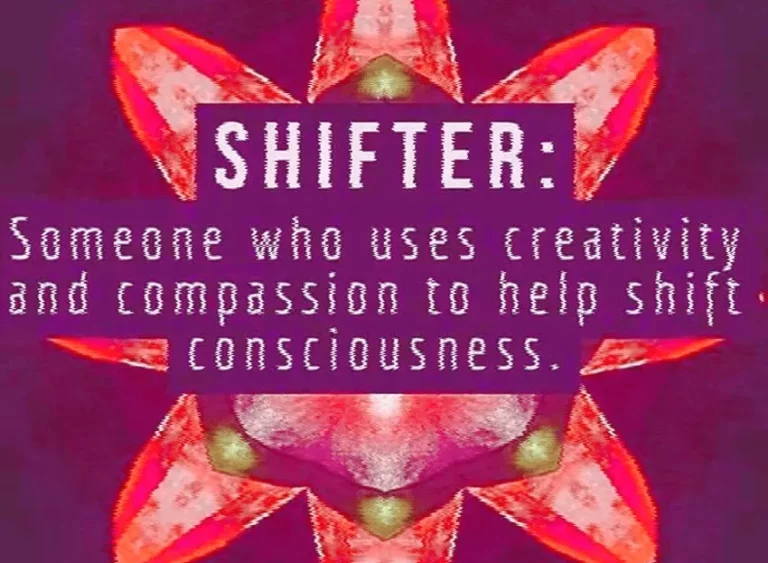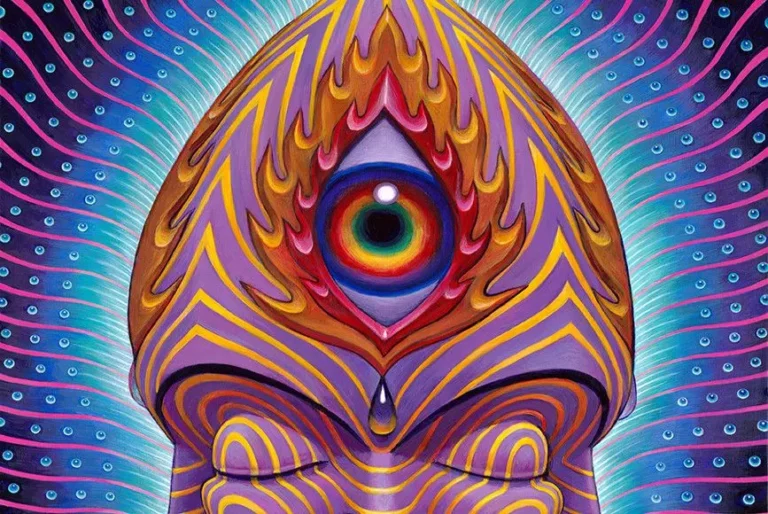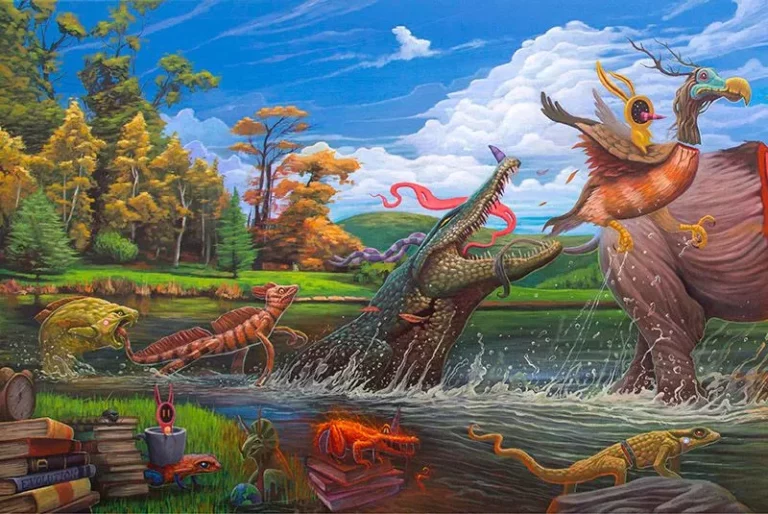“Things alter for the worse spontaneously, if they be not altered for the better designedly.” ~ Francis Bacon
Shifter, changer, mover, disturber. A shift put simply is one who uses creativity and compassion to help shift consciousness. A shifter shifts the mind, shifts perspectives, shifts worldviews. A shifter flips dogmatic scripts through open minded rifts.
A shifter shatters mental paradigms against the brick wall of truth. A shifter leverages empathy against apathy, thereby smoothing the way toward creative synergy.
Moreover, SHIFTER is an acronym. You may be a shifter if you are Soul-centric, Humorous, Innovative, Fearless, a Trailblazer, if you practice Equilibrium, or if you’re Relentless.
Here are 7 signs you may be a shifter. Let’s break it down…
1. You are Soul-centric rather than Egocentric
“Resolve to be tender with the young, compassionate with the aged, sympathetic with the striving, and tolerant with the weak and wrong. Sometime in your life you will have been all of these.” ~ Robert Goddard
Your ego has been initiated by soul. Through difficult soul-work, your ego has gone through vital thresholds that have made you more aware of the interconnectedness of all things and your place within the greater cosmos. You have come to learn that egocentric perspective is too one-dimensional.
Your ego was an important tool to break away from the trap of codependency and to discover the liberation of independence, but you understand why it was necessary to kill the ego (ego-death) to birth the soul and experience holistic interdependence.
As a shifter, you realize the vital importance of having a soul-centric perspective. It makes you more compassionate, more open minded, and more empathetic toward the plight of others; to include a deeper eco-consciousness toward the more than human world.
2. You Practice High Humor
“Who among you can at the same time laugh and be exalted? He who climbs the highest mountains laughs at all tragedies, real or imagined. ~ Nietzsche
Another sign you may be a shifter is that you realize having a good sense of humor is vital for a shifter. It keeps you playful and full of laughter in the face of those who would take themselves too seriously. Such humor keeps you flexible where others are rigid, and open-minded where others are close-minded.
Rather than covert seriousness, you practice overt sincerity. You wear your humor on your sleeve, like a beacon of wit for those wayward vessels longing for an escape from the bitter trap of self-seriousness.
As a shifter, you are not merely humorous to be funny. Rather, you are stoically humorous. You practice high humor. The kind of humor that stares into the abyss and laughs.
The kind of humor that mocks gods and devils alike. The kind of humor that liberates the soul and lights the beacon fires of self-empowerment.
3. You are deeply Innovative
“The significant problems we face cannot be solved at the same level of thinking we were at when we created them.” ~ Einstein
You don’t just change worldviews, you are also adept at creating them. You are imaginative and creative enough to introduce novel ways of perceiving reality. You are willing to make mistakes.
Trial and error are the staircase of innovation and you are all too willing to climb. In fact, your trips and falls, your failures and setbacks, are more vital toward your innovation than your successes are. They are the stepping stones to higher shifts in consciousness.
You are adamant about using your innovative approach as a key to unlock locked minds. Once unlocked, you are skilled enough as a shifter to plant seeds that have the potential to grow into questions.
And it is through the almighty question, where tiny cracks of skepticism become full-on shifts in consciousness. And suddenly, the mind within which you planted the seed is at a higher level of thinking than it was when you planted it.
4. You are Fearless
“To choose the course of honesty is to risk the sacrifice of popularity; to choose adventure is to jeopardize security.” ~ Guy Claxton
As a shifter, fearlessness is your lifeblood. Without it, you would be too docile to dare take on the arduous task of shifting your own consciousness, let alone shifting the consciousness of others.
You would be too daunted by the prospect of being a lone wolf among domesticated dogs, too overwhelmed by the loneliness of being the tip of the spear (see the next section on trailblazing), to ever take on the task of a catalyzing shifter.
Your fear fuels your courage, thereby canceling it out. Action is the thing, and you are ever-proactive. As such, your fear of being wrong, or of failing, becomes fuel for the fire of being proactive; of being active in the force of the inactive and stagnant majority.
As a shifter, you are a catalyzing agent par excellence, and the excellence comes from your fearlessness. As far as you’re concerned, the adventure of shifting consciousness, though risky, beats the comfort of remaining content and stuck in safety.
You are a creature of passion and pressure and grinding, of ceaseless movement. You realize that to be still is to be…not alive.
5. You are a Trailblazer
“In order to shake a hypothesis, it is sometimes not necessary to do anything more than push it as far as it will go.” ~ Denis Diderot
You are the tip of the spear, but your soul=centric perspective makes you a force of nature first and a person second. Your ego is the arrowhead, but the bow and the aim are cosmically and holistically governed.
So when you shoot, you shoot far off the beaten path, launching signal flares that light the way toward new and progressive ways of being human in this world.
Shifter is synonymous with pathfinder, and you are utmost a pioneer of navigating both known paths and discovering unknown paths to weigh against each other as the overall sacred journey of being a shifter upon the meta-path of transforming minds into mindfulness, and awareness into higher states of consciousness.
6. Your Practice Equilibrium
“A desperate disease requires a dangerous remedy.” ~ Guy Fawks
Within the tumultuous waters of shifting the consciousness of others, equilibrium is the benchmark. It is the lodestone from which all valid philosophers stones are chipped off.
Without it, there is no health, and without health there is no survival. Therefore, all valid mindsets must be weighed against it as the most binding of universal laws.
As a shifter, you understand that shifting is all about balance. And balance, for a being with a mind, body, and soul, is all about health. Therefore, you are adamant about maintaining a healthy balance; not only of the self, but of the self related to it’s environment.

As Louis G. Herman said, “A healthy mind requires a healthy body, which together depend on a healthy society in harmonious relation to the Earth.”
As it stands, our current profoundly sick society (any society that pollutes its own air, water, food, and minds) is not in harmonious relation with the earth.
So, one of the primary tasks of a shifter is to shift the sick mind that has been brainwashed and conditioned by the sick society into a healthier mindset.
7. You are Relentless
“I would rather be ashes tan dust.” ~ Jack London
As a shifter, your relentlessness verges on ruthlessness. You understand that the health of a species is at stake. Indeed, the progressive evolution of the human race is on the line.
If the unhealthy mindsets that are currently committing ecocide, are not shifted to a healthier state then the balanced biosphere that has sustained our species for hundreds of thousands of years will collapse at our own expense.
And so in the spirit of relentlessness, you are all too willing to take on the responsibility of being a beacon of hope in the dark. Just as you are all too willing, in the spirit of ruthlessness to take on the responsibility of being a beacon of darkness in the blinding light of a profoundly sick society that pretends it is not sick.
In the end, you are willing to take on the ridicule from the sick majority in order to shift the consciousness of a few, in hopes that a tipping point will someday turn the tide. For at the end of the day, shifting minds is shifting worlds.
Image Sources:












